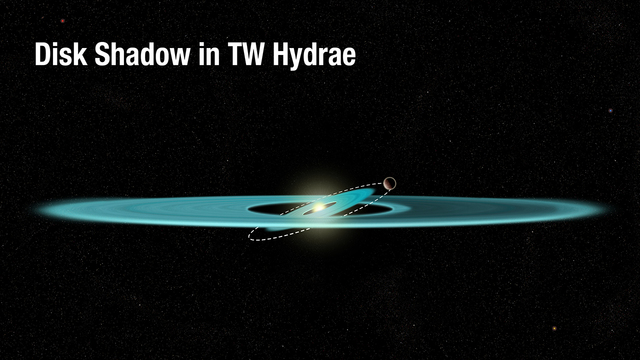By looking over 18 years’ of observations from the Hubble Space Telescope that focused on a star named TW Hydrae, astronomers have potentially discovered an unseen exoplanet. That’s all thanks to the shadow it’s responsible for on the gas disk around the star.
As Space.com notes, TW Hydrae is a young star around 8 million years old. It floats through space roughly 192 light-years away from Earth. There’s a shadow that “rotates around the 41-billion-mile-wide (66 billion kilometers) disk once every 16 years.”
Astronomers think that the reason for the shadow is most likely an unseen exoplanet. This comes from a study lead by John Debes, of the Space Telescope Science Institute. They once thought that it was simply a feature of the disk, but that changed after they compiled all the data from a 16-year period.
Here’s Debes:
“The fact that I saw the same motion over 10 billion miles from the star was pretty significant, and told me that I was seeing something that was imprinted on the outer disk rather than something that was happening directly in the disk itself…The best explanation is that the feature is a shadow moving across the surface of the disk.”
The shadow was being caused by something within the disk itself. There’s an unseen planet there, according to the leading thought, that’s actually pulling up at the inner disk around the star. That disk is causing a shadow as we view the star itself. Here’s Debes again.
“The most plausible scenario is the gravitational influence of an unseen planet, which is pulling material out of the plane of the disk and twisting the inner disk…The misaligned disk is inside the planet’s orbit.”
Discovering planets blotted out by stars is hard astronomical work. This type of detection might help other study of stellar disks and what they obscure.














